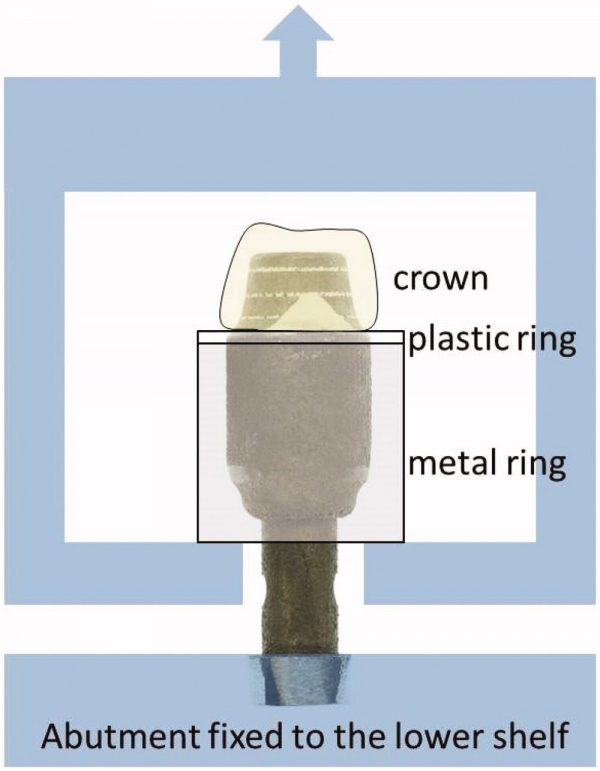Melt etching outperforms sandblasting

Bonding strength to different cements has been regarded as a factor limiting the use of zirconia materials.
Groups of zirconia crowns where treated by sandblasting, grinding with carbide bur, or melt-etching with KHF2.
For stronger and longer lasting dental crowns, a new NIOM study suggests that melt etching is better than sandblasting.
A recently published NIOM study shows that melt etching the inner surface of dental crowns made of zirconia, outperforms sandblasting – when the adhesion strength to implant abutments is tested.
The tested surface treatments
The study tested three treatments of the inner surface of zirconia crowns:
- Sandblasting
- Grinding
- Melt etching
Bond strength
The crowns where cemented with one resin cement recommended for zirconia to abutments of 3D-printed CoCr-alloy. The sandblasted surface had the lowest bond strength, and the melt-etched surface had the highest bond strength.
It is worth noting that previous studies by several authors, including Prado et al.1 describes how sandblasting and grinding causes structural changes in the zirconia. The changes are likely to weaken the crowns, and reduce their longevity.
Melt etching has previously been successfully used to create a rough surface with minimal structural changes in the zirconia surface2.
Clinical implication
The melt etching gives less structural transformation of zirconia as well has showing the highest adhesion strength. It is therefore likely to be beneficial over time.

______________________________________________________________________________________
1 http://dx.doi.org/10.1590/1807-3107bor-2017.vol31.0082
2 https://doi.org/10.1080/23337931.2017.1309658
Read more: Kvam K, Irkayek A, Vangaeva E, El-Homsi F. Comparison of sandblasted, ground and melt-etched zirconia crowns regarding adhesion strength to resin cement. https://www.tandfonline.com/doi/full/10.1080/23337931.2019.1621179
The study was originally published in Acta Biomaterialia Odontologica Scandinavica, which has recently changed name to Biomaterial Investigations in Dentistry.
NIOM Newsletter August 2019
